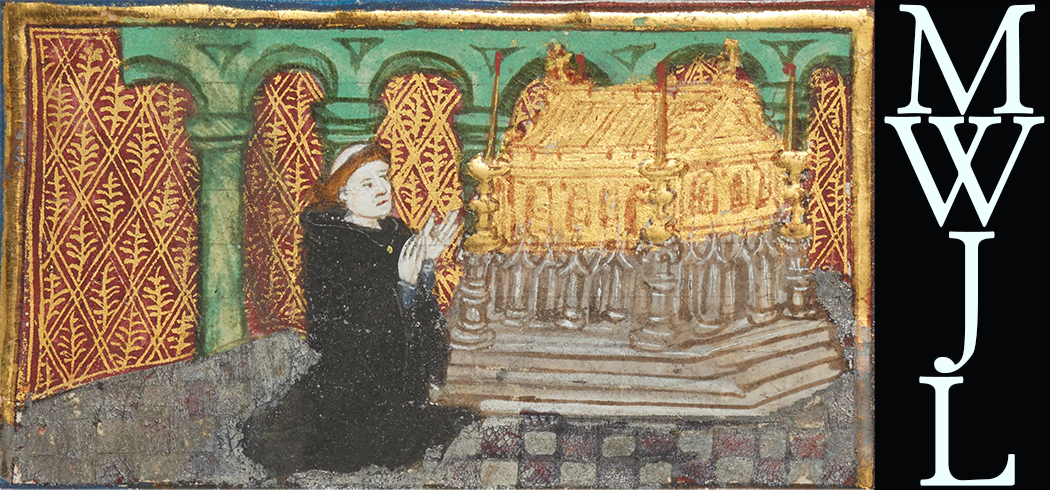 The Testament of John Lydgate:
British Library Additional 34193 Verses
The Testament of John Lydgate:
British Library Additional 34193 Verses
HomeAbout the ArchiveAbout John LydgateWorksManuscriptsAbout this ManuscriptEditorial ApparatusContactVisualization

Folio 224 Recto
Compare Witnesses: •
In Ameros hertis brynnynge of kyndnesse •
Martyr Ignasius cane bere of this witnesse •
A mynde whose hert be grace whiche is devidid •
withe laureat lettis as golde thay dide shyne •
To teche ałł Crystyn ther hedis to Encline •
To blessied Ihesu and bowe a downe ther knee •
Of foryen derkenesse as clerkis determyn •
how lyke a lambe is hede he dede inclyne •
whoo blode downe Rane rigħt asse a lyne •
To wasshe the orders of oure iniquite •
Melde with water clere as crestallyn •
Wiche from his hert downe raylied be þe knee •
Be holde ihesu made our Redempcion •
And from his hert two licoursse þe rane downe •
On Caluerey trouth war welle sene •
Where longous with a sharrp spere kene •
Persied his hert vpon the Rode tree •
O man kynde thynk what this dothe mene •
And vnto ihesu a bow dnow thy knee •
Notes
-
The scribe appears to have chosen an "er" ligature rather than "er" as rendered elsewhere in the manuscript. ↩
-
While it is possible the curved mark over the n, which appears fairly consistantly in the "on" construction, is either a scribal affectation or meant to indicate an "oun" suspension there is a dot over the "n" here, as well. That suggests that in this case we're to understand there is a suspension present. ↩
-
The fifth glyph here is an i based on the way "s" and the "ie" combination is rendered elsewhere in the manuscript. ↩
-
The EETS manuscript (and Harley 218 as its exemplar) has "clips" here, but I think "schippis," or ships, actually makes better sense with the rest of the stanza. That said Additional 29729 has "clips" as well. ↩
-
The manuscript has a large bar through the 'h' and over the n. This could be seen as either a barred h or an 'n' suspension. Considering how "h" is rendered in places like "thougħ" in line three of verse three as well the suspension marks over "ihesu" throughout and "spirtuałł" in line seven of verse two suggests it should be considered a suspension. A counterargument can be made based on the barred "h" in "Chasietħ" in line one of this stanza, however, so I have decided to split the difference and render it as "Ioħnn" ↩
-
The EETS edition (and Harley 218) has "baptem" here. This is likely correct, but the initial glyph simply can't be "b" based on the example of capital "B" at line one of this verse and the form of "b" in "blode" at line five of verse six. When compared with "kene" at line five, it is clear that this meant to be a "k." ↩
-
Here the scribe skipped over "excellent" and began to write "nobylnesse" but corrected themselves after completing "nobylle." Much like other deletions they did so by dotting underneath the word to be deleted, and then at a later point it has been struck through in red. ↩











